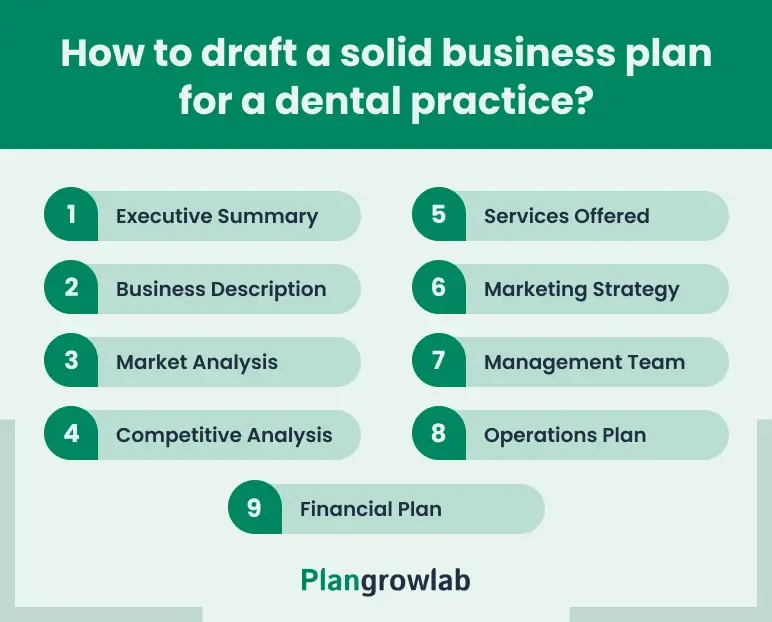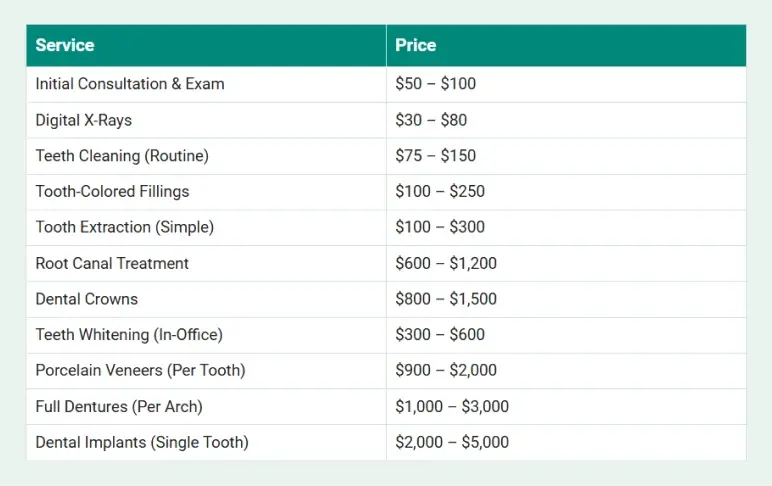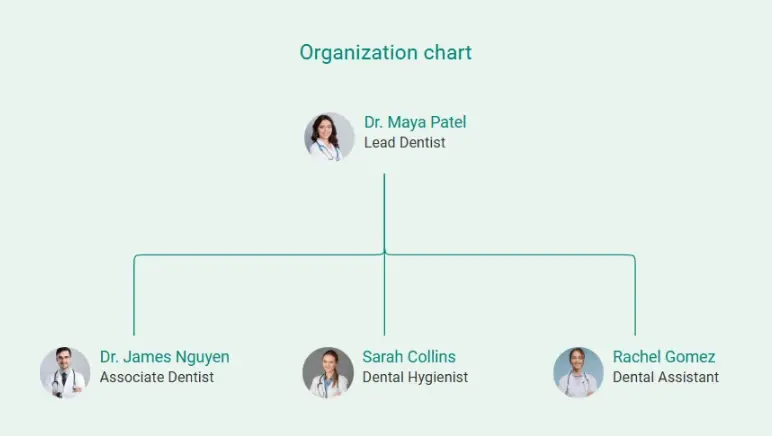Have you ever dreamed of owning your own dental clinic and transforming lives with healthier smiles?
Turning that dream into reality takes more than just treating teeth—it requires a strong, practical business plan.
The idea of creating that plan can be overwhelming at first. Even Glenn Ong-Veloso, CEO of Glenn Dental, felt the same when he began his journey.
I recently had a conversation with Glenn about how he built his successful clinic. From his experience, I’ve put together this guide to inspire and help you along the way.
What is the importance of a dental business plan?
Whether you're starting your first dental clinic (your own practice) or have some background already, a business plan is really crucial.
Here’s why:
- It sets clear goals, whether you want to run one dental office or open more in the future.
- It shows banks or investors that you have a good plan and know what you’re doing.
- It makes it easier to get funding because it explains how your clinic will make money and grow.
- It helps you prepare for problems like competition, staff issues, or rule changes.
- It lets you check your progress by comparing your real numbers to what you planned, so you can make changes if needed.
In short, a good business plan keeps your dental office on track and ready for success.
How to draft a solid business plan for a dental practice?
When writing a business plan for your dental practice, it’s important to focus on the key parts that clearly share your vision and how you plan to succeed.
Here’s a simple guide to help you build a strong and effective dental clinic business plan:

1. Executive Summary
The executive summary is a short introduction to your dental clinic business plan. It gives a quick look at what your clinic offers and what makes it special.
Even though this comes first, executive summary usually best to write it last—once you’ve covered the other parts of your plan. This lets you quickly highlight the key points from the rest of your business plan.
Here’s what to include in this section:
- Name and location of your dental office
- Founders or key team members
- Your vision and mission statement
- Market demand and target patients
- What makes your dental office different
- A quick look at your financial goals
This section should catch the reader’s attention and give them a reason to keep reading. Keep it short, clear, and to the point.
“Writing the executive summary for my dental office was tricky at first. I didn’t want it to sound too formal or vague.
So, I focused on what really matters—our mission to provide quality, gentle care and build trust with patients. Once I was clear on that, it became easier to highlight our dental services, goals, and what makes us different.
Now, the executive summary feels real and gives a strong start to the rest of the plan.”—Glenn Ong-Veloso
2. Business Description
This section helps people understand what your dental clinic is all about.
Start by sharing what kind of dental services you provide. Is it for families, kids, general checkups, or sedation dentistry treatments? Make it easy for someone to picture what your clinic offers.
Then talk about your location. Why did you choose it? Maybe it’s close to schools, offices, or in a growing neighborhood. Mention what makes your space stand out—like a relaxing atmosphere, easy parking, or a modern setup.
Share your story too. What inspired you to open the clinic? Was it a gap in the area, a personal dream, or a goal to offer better care?
Lastly, explain the ownership of your clinic and its legal structure. Are you the sole owner, operating as a sole proprietorship, or do you have a partner or team behind you?
"I wasn’t sure how to put my dental clinic into words at first. But once I focused on why I started—to give people honest, gentle care—it all made sense.
Writing down the basics like our goals and setup helped me feel more confident about moving forward."—Glenn Ong-Veloso
3. Market Analysis
Market analysis explains who your dental clinic will serve and why it’s needed in your area. It also shows that you’ve done your research and have a good understanding of the dental industry.
You can include these important parts in this section:
- What’s happening in the industry – For example, more people want specialized services like cosmetic dentistry treatments or easier ways to book and pay for dental care.
- Local demand – Explain why people in your area need dental services. Is there a growing population? Are there not enough clinics nearby?
- Who your patients are – Talk about who you’ll treat, like kids, families, seniors, or patients needing special care.
- Rules and licenses – Mention the rules your clinic will follow to stay safe and legal.
By understanding your target market, you can plan better, reach the right patients, and grow your clinic with confidence.
"I didn’t know how to do local market research for my dental clinic. So, I started by talking to people in the area.
They told me they wanted a friendly dentist close to home. That helped me see what people really needed. I also looked at industry trends and saw more people were looking for gentle, modern dental care.
Once I combined what I learned from the community and the trends, I felt more confident about starting my clinic."—Glenn Ong-Veloso
4. Competitive Analysis
This section helps show that you know who your competitors are and how your dental clinic will be different.
The table below breaks things down in a simple way. It looks at what other clinics do well, where they might fall short, and what you’ll do to stand out.
| Aspect | Details |
|---|---|
| Other clinics nearby | Look at dental clinics around you. What services do they offer? What are they known for? |
| What they lack | Find out what they don’t do well—like long waits, not enough care, or not many services. |
| What makes you better | Show what your clinic does differently—like friendly service, clean space, flexible hours, or new equipment. |
| How you’ll grow | Share your ideas to stay ahead—like adding new services, getting patient feedback, or joining local events. |
This shows that your clinic will not just be another dental office—it’ll be one people trust and want to come back to.
“When I looked at other existing practices in the area, it helped me understand the target market better.
Some had great reviews, others were missing things like flexible hours or a friendly vibe. That’s when I realized I could do things differently—offer care that feels more personal and welcoming.”—Glenn Ong-Veloso
5. Services Offered
Start by listing the main services you offer, like cleanings, fillings, teeth whitening, braces, oral surgery, or other treatments.
Next, explain what makes your clinic special. Do you use the latest tools? Offer care that’s tailored to each patient? Keep the place calm and friendly? These things make you stand out.
For pricing, decide how you’ll charge. Will you charge per service, offer packages, or create plans for regular patients? You could also have different price levels—basic, standard, and premium.

If you offer extra services like emergency visits, weekend hours, or online consultations, mention them. These extra services make your clinic more helpful and trustworthy.
Finally, make sure your prices and services match what people in your area need and can afford. This will help your clinic grow.
"Choosing the right services for my dental clinic was tough.
I started with just cleanings and check-ups. But after talking to patients, I added teeth whitening, braces, and emergency care.
Offering more choices helped bring in different patients—some just needed a cleaning, while others wanted more treatments.
Having different price options made it easier for patients to pick what worked for them and their budget." — Glenn Ong-Veloso
6. Marketing Strategy
Your marketing strategy explains how you’ll bring in new patients, keep them coming back, and grow your dental clinic. It helps you reach the right people and build trust.
Here are some easy and effective marketing strategy ideas:
- Share helpful tips and updates on social media (Facebook, Instagram, Google)
- Send email reminders and offers to patients
- Partner with local schools, gyms, or businesses
- Run referral programs to reward patients who bring friends or family
- Offer discounts for first-time visits or family checkups
- Join local health fairs or community events
- Start patient loyalty programs to reward regular patients
- Use flyers, posters, and local ads to spread the word
A clear and simple plan shows that you're ready to connect with your community and grow your clinic over time.
"Promoting my dental clinic felt confusing at starting, and I didn’t have a big budget.
So, I kept it simple—set up a Google profile and asked early patients to leave reviews. That helped people find me and trust the clinic.
I also shared small updates on social media, like clinic photos and patient smiles. It made the clinic feel more friendly and real."—Glenn Ong-Veloso
7. Management Team
In this section, talk about the key people behind your dental clinic.
It’s important to show who is involved, even if you’re running it alone. A clear team setup helps build trust and keeps things organized.
Start with yourself. Talk about your education, experience in dentistry, and the skills you have to run the clinic.
If you have a team, explain what each person does, like treating patients, managing appointments, or helping with daily work. You can also say a little about their background and what they’re good at.
You can add a simple organizational chart to show your team and who does what. For example:

If you have any mentors or advisors, like experienced dentists or business helpers, you can include them too. Their support makes your clinic stronger and more reliable.
"In the beginning, I thought I could manage the whole clinic on my own—seeing patients, handling bookings, even doing paperwork.
But it got exhausting fast. With some advice, I brought in a great team, and that changed everything.
Now I can focus on giving patients the best care, and I know the clinic is running well."—Glenn Ong-Veloso
8. Operations Plan
The operations plan explains how your dental clinic will run day by day to stay organized and give great care to patients.
Start with patient flow—how old and new patients book appointments, check in, get treatment, and return for follow-ups. Mention if you’ll use any software to help with this.
Talk about your team—dentists, hygienists, dental assistants, and front desk staff. Will they work full-time or part-time?
Next, explain how you’ll help patients with questions before or after their visits—by phone, email, or an online system.
Then, cover clinic maintenance—keeping things clean, checking tools and equipment, and making sure everything is safe. Say who will do this each day.
Finish by sharing how you’ll keep improving—like training your staff, listening to patient feedback, or upgrading your tools.
"Making the operations plan helped me think about how the dental clinic would work each day. It wasn’t just about opening—it was about handling appointments, keeping things clean, and helping patients.
The hardest part was planning the time and money. I worked with my team to set up a schedule, create automatic financials, and used tools to stay organized. It made me feel more ready to run the clinic well."—Glenn Ong-Veloso
9. Financial Plan
Your financial plan is a key part of your dental business plan. It helps attract potential investors and ensures your practice can grow and stay profitable over time.
This section shows how your clinic will make money, manage expenses, and includes financial projections for the first 3 to 5 years.
Here are the main financial documents to include:
- Income statement (profit and loss)
- Break-even analysis
- Projected balance sheet
- Cash flow statement
- Funding requirements
- Risk management plan
Also, include rough numbers for your start-up costs and how much money you expect to make. Explain how you’ll use the money—for example, buying equipment, marketing, hiring staff, or opening a new location.

A clear financial plan with strong financial projections shows investors you’re serious and have a smart plan to grow your dental practice.
"I used to feel lost when it came to financial planning—managing costs, setting a budget, and trying to predict income in a changing dental market.
But using financial planning software made everything easier. It helped me organize expenses like equipment, marketing, and staff, and create clear cash flow and revenue projections."—Glenn Ong-Veloso
Download a free dental practice business plan template
Ready to develop your dental business plan but need a little extra support? We’ve got you covered! Download our dental business plan template in PDF to jump-start your journey.
This investor-friendly template has helped many dental professionals create successful plans—I hope it helps you, too. With clear examples and helpful tips, it makes writing your plan easier than ever.
Get help writing a plan
Now that you’ve gone through this guide, creating your dental business plan should feel much easier.
But if writing isn’t your thing, no worries—our expert business plan writers are here to help. They’ll take your ideas and turn them into a clear, professional plan that reflects your goals and sets you up for success.
Get a quote today and take the next step toward launching your successful practice.
Frequently Asked Questions
Why do I conduct market research for a dental practice business plan?
You do market research to understand your patients and your competition. It helps you find out things like:
- Who your ideal patients are
- What dental services they need
- What other dental clinics are doing nearby
- How you can stand out
This way, you can make smart decisions, attract the right people, and grow your dental practice successfully.
Is it worth hiring professional writers or consultants?
Yes, it can be worth hiring a professional writer or consultant. They know how to make your business plan clear, organized, and professional. This can save you time and help you avoid mistakes.
How long should a dental practice business plan be?
A dental business plan is usually 10 to 20 pages long. It just needs to be long enough to explain your goals, services, and how you’ll run your practice. Keep it clear and easy to read—only include what’s really important.
What could be the easiest way to write your dental business plan?
The easiest way to write a dental business plan is to use a business planning tool like Upmetrics, Bizplan, LivePlan, PlanGuru, or Enloop. These tools give you ready-made templates and simple steps to follow, so you don’t have to start from scratch. They help you stay organized and make the process faster and easier.
When to review and update my dental business plan?
You should review and update your dental business plan at least once a year. It's also a good idea to update it whenever something big changes, like adding new services, opening a new location, or if the market shifts. Keeping your plan fresh helps you stay on track, set clear goals, and grow your business the smart way.

